- You can earn rewards on your checking and savings accounts.
- Up to 4.60% APY on savings and 0.50% APY on checking.
Our evaluations and opinions are not influenced by our advertising relationships, but we may earn a commission from our partners’ links. This content is created independently from TIME’s editorial staff. Learn more about it.
A checking account allows you to easily make deposits and withdrawals to pay for everyday expenses such as rent, mortgage, groceries, and bills. However, they are not all created equal. The best checking accounts offer special benefits such as high annual percentage yields (APYs), low or nonexistent monthly fees, and special offers for opening an account.
Learn more about the best checking accounts, how to choose the best checking account for your needs, and the general requirements banks will have for opening a checking account.
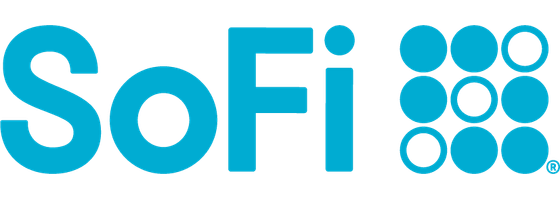
Sofi Online Checking Account
Sofi Online Checking Account
Disclosures
SoFi members with Qualifying Deposits can earn 4.50% APY on savings balances (including Vaults) and 0.50% APY on checking balances. Qualifying Deposits means one or more deposits that, in the aggregate, are equal to or greater than $5,000 to an account holder’s SoFi Checking and Savings account (“Qualifying Deposits”) during a 30-day Evaluation Period (as defined below). Qualifying Deposits only include those deposits from the following eligible sources: (i) ACH transfers, (ii) inbound wire transfers, (iii) peer-to-peer transfers (i.e., external transfers from PayPal, Venmo, etc. and internal peer-to-peer transfers from a SoFi account belonging to another account holder), (iv) check deposits, (v) instant funding to your SoFi Bank Debit Card, (vi) push payments to your SoFi Bank Debit Card, and (vii) cash deposits. Qualifying Deposits do not include: (i) transfers between an account holder’s Checking account, Savings account, and/or Vaults; (ii) interest payments; (iii) bonuses issued by SoFi Bank or its affiliates; or (iv) credits, reversals, and refunds from SoFi Bank, N.A. (“SoFi Bank”) or from a merchant.
SoFi Bank shall, in its sole discretion, assess each account holder’s Direct Deposit activity and Qualifying Deposits throughout each 30-Day Evaluation Period to determine the applicability of rates and may request additional documentation for verification of eligibility. The 30-Day Evaluation Period refers to the “Start Date” and “End Date” set forth on the APY Details page of your account, which comprises a period of 30 calendar days (the “30-Day Evaluation Period”). You can access the APY Details page at any time by logging into your SoFi account on the SoFi mobile app or SoFi website and selecting either (i) Banking > Savings > Current APY or (ii) Banking > Checking > Current APY. Upon receiving a Direct Deposit or $5,000 in Qualifying Deposits to your account, you will begin earning 4.50% APY on savings balances (including Vaults) and 0.50% on checking balances on or before the following calendar day. You will continue to earn these APYs for (i) the remainder of the current 30-Day Evaluation Period and through the end of the subsequent 30-Day Evaluation Period and (ii) any following 30-day Evaluation Periods during which SoFi Bank determines you to have Direct Deposit activity or $5,000 in Qualifying Deposits without interruption.
SoFi Bank reserves the right to grant a grace period to account holders following a change in Direct Deposit activity or Qualifying Deposits activity before adjusting rates. If SoFi Bank grants you a grace period, the dates for such grace period will be reflected on the APY Details page of your account. If SoFi Bank determines that you did not have Direct Deposit activity or $5,000 in Qualifying Deposits during the current 30-day Evaluation Period and, if applicable, the grace period, then you will begin earning the rates earned by account holders without either Direct Deposit or Qualifying Deposits until you have Direct Deposit activity or $5,000 in Qualifying Deposits in a subsequent 30-Day Evaluation Period. For the avoidance of doubt, an account holder with both Direct Deposit activity and Qualifying Deposits will earn the rates earned by account holders with Direct Deposit.
Members without either Direct Deposit activity or Qualifying Deposits, as determined by SoFi Bank, during a 30-Day Evaluation Period and, if applicable, the grace period, will earn 1.20% APY on savings balances (including Vaults) and 0.50% APY on checking balances.
Interest rates are variable and subject to change at any time. These rates are current as of 8/9/2023. There is no minimum balance requirement. Additional information can be found at http://www.sofi.com/legal/banking-rate-sheet.
(2) 7x based on FDIC monthly interest checking rate as of June 20, 2023.
Best checking accounts compared 2024
| Checking account | Best for | APY* | Monthly fee | Special offer |
|---|---|---|---|---|
Rewards | 4.60% | $0 | Up to $300 bonus with qualifying direct deposits | |
APY for high balances | Up to 3.30% | $0 | Use promo code AXOS300 and apply by June 30, 2024, to earn up to a $300 bonus! | |
World travelers | N/A | $50 (waived in several ways) | Between $1,500 and $4,000; Offer expires Mar. 27, 2024 | |
U.S. Bank Smartly® Checking | AI assistance | N/A | $6.95 (waived in several ways) | Up to $500 after completing qualifying activities. Offer expires June 27, 2024.. Offer expires Mar. 12, 2024 |
Mobile app | N/A | $12 (waived in several ways) | New Chase checking customers enjoy a $300 bonus when you open a Chase Total Checking® account with qualifying activities. Offer expires 7/24/2024. | |
High APY | 1.10% | $0 | Free pay ring (otherwise $29) upon account opening | |
Overdraft protection | Up to 0.25% | $0 | N/A | |
Families | Earn up to 4.00% with Savings Pods | $0 | N/A | |
Debit card security | N/A | $0 | N/A | |
Zero fees | 0.25% with a balance of $25,000 or more; 0.10% with a balance of under $25,000 | $0 | N/A | |
Money management | N/A | $0 if you enroll in paperless statements | $50 | |
Capital One 360 Checking | Easy cash deposits | 0.10% | $0 | N/A |
Citi Basic Banking | Regular checking | N/A | $12, waived with $1,500 minimum balance | N/A |
PNC Virtual Wallet | Checking and savings | Up to 0.03% | $7 to $25 (waived in several ways) | Up to $400 |
BMO Smart Money | Young adults | N/A | $5 ($0 if you’re under 25) | N/A |
Open a checking account today
Our recommendations for the best checking accounts
Best for rewards: SoFi Checking

Sofi Online Checking Account
Sofi Online Checking Account
When you open a SoFi Checking account, you’ll be eligible for a bonus of up to $300, depending on your deposit amount. Then you’ll benefit from SoFi Member Rewards, where you can earn points for getting paid, spending at certain retailers, monitoring your credit, and more. SoFi Member Rewards points can be redeemed for cash, shares in an investment account, or a statement credit on a SoFi credit card. You can manage and redeem your points from the SoFi app. This program is designed to help SoFi members achieve financial independence.
Pros:
Cons:
- There’s no option for a standalone checking account.
Why we picked it: The SoFi Checking account can earn rewards that you can turn into cash back, statement credit, or an investment. This perk is an unusual feature for a checking account, which makes it stand out.
Best APY for high balances: Axos Rewards Checking
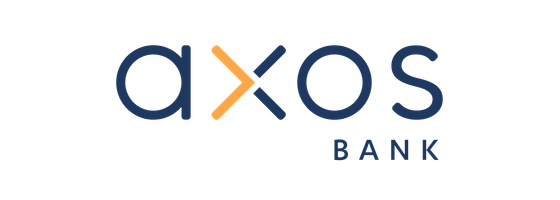
Axos Rewards Checking
Axos Rewards Checking
If you have monthly direct deposits of at least $1,500, you can start earning interest (0.40%) on your Axos Rewards Checking account. Meeting some additional requirements listed below can increase your APY, eventually reaching a maximum of 3.30% on up to $50,000:
- Making at least 10 debit card purchases of at least $3 each or signing up for the Account Aggregation/Personal Finance Manager tool.
- Maintaining an average daily balance of at least $2,500 in a managed investment portfolio.
- Maintaining an average daily balance of at least $2,500 in a self-directed portfolio.
- Making a monthly loan payment from your Axos Rewards Checking account.
If you meet all four requirements, you earn the maximum APY of 3.30%.
Axos is currently running a limited time offer, where new accounts can earn up to a $300 welcome bonus with promo code AXOS300 (up to and including June 30, 2024).
Pros:
- You can earn up to 3.3% APY.
- There are no monthly maintenance, overdraft, or minimum balance fees.
- Axos reimburses fees for all domestic ATMs.
Cons:
- There are several requirements you must meet to qualify for the high APY.
Why we picked it: You can earn up to 3.3% APY on an Axos Rewards Checking account—about 47 times the national average checking account APY. If you qualify, making this choice is a no-brainer.
Best for world travelers: HSBC Premier Checking
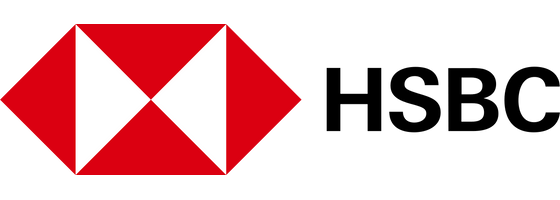
HSBC Premier Checking
HSBC Premier Checking
The HSBC Premier Checking account is designed for those who frequently travel to different countries and need a bank account to support them.
To qualify for an HSBC Premier Checking account, you must meet at least one of the following criteria:
- $75,000 or more in total deposits and/or investments.
- $5,000 or more in monthly direct deposits.
- A U.S. mortgage with an original loan account of $500,000 or more.
These requirements make this account out of reach for many consumers. However, those who qualify for a Premier account will enjoy numerous perks. The Premier account allows the holder to share their Premier status with up to four family members, get support for opening an overseas account, and avoid paying foreign transaction fees.
Finally, HSBC Premier Checking currently has an incredible sign-on bonus of up to $4,000. If you can deposit or invest at least $100,000, you will be eligible for a free cash bonus; the more you deposit, the higher the bonus.
Pros:
- There are no foreign transaction fees.
- If you or a family member move to another country, you’ll get overseas account opening support.
- There is a sign-on bonus of $1,500 to $4,000 for depositing or investing $100,000 or more.
Cons:
- The stringent qualifying criteria may be out of reach for many customers.
- There is a monthly maintenance fee of $50 if you don’t maintain account eligibility requirements.
Why we picked it: The HSBC Premier Checking account has a lot of perks for those who meet the eligibility criteria and frequently travel to overseas locations. And how many accounts offer banking privileges that extend to family members?
Best for AI assistance: U.S. Bank Smartly Checking
The U.S. Bank Sma rtly Checking account from U.S. Bank has a handy Smart Assistant that can assist you with several tasks via the app. To use this feature, open the app and tap the microphone to talk. You can give commands such as “transfer money from my savings account” or “pay my credit card bill,” and Smart Assistant will help you complete the task quickly and efficiently. This feature brings even more convenience to mobile banking.
- Earn up to $800 when you open a new U.S. Bank Smartly® Checking account and a Standard Savings account and complete qualifying activities. Subject to certain terms and limitations. Offer valid through Mar. 12, 2024. Member FDIC.
- Offer may not be available if you live outside of the U.S. Bank footprint or are not an existing client of U.S. Bank or State Farm.
As a U.S. Bank Smartly Checking customer, you’ll be charged a monthly maintenance fee of $6.95. However, if you meet one of the following requirements, the fee will be reduced to $0.
- Maintain an average account balance of at least $1,500;
- Have U.S. Bank consumer credit card that is open, active, and in good standing; or
- Have a combined monthly direct deposit of at least $1,000.
One of the main perks of a U.S. Bank Smartly Checking account is that you can opt into Smart Rewards. This program allows you to earn interest on your checking account balance and avoid overdraft fees and ATM transaction fees. If you link your U.S. Bank Smartly Checking account to a U.S. Bank credit card, you can also get cash back on certain brands and categories when using your debit card.
Using the U.S. Bank mobile app, you can set up spending categories to track your budget and set up alerts to notify you when you’re reaching the spending cap in a specific category. The app also features a goal planner; you can set up a “goal” such as making a down payment on a house or taking your dream vacation, and the app will estimate how much you’ll need to save. Other benefits include mobile check deposits, automated bill pay, Zelle instant transfers, and contactless payments.
Pros:
- The Smart Assistant feature can assist with simple tasks via the app.
- The monthly maintenance fee can be waived if you meet certain requirements.
- You can earn interest on your checking account by opting into Smart Rewards.
Cons:
- There is a $6.95 monthly maintenance fee.
Why we picked it: The U.S. Bank Smartly Checking account has a lot to offer, including a helpful AI assistant that can help you with basic banking tasks quickly and efficiently. You get to talk your commands instead of typing them.
Best for mobile app: Chase Total Checking
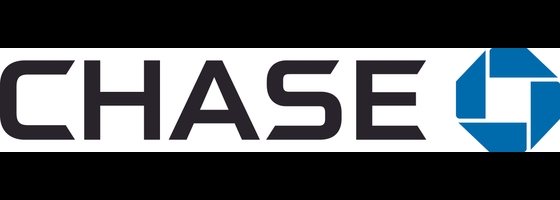
Chase Total Checking®
Chase Total Checking®
The Chase mobile app offers three ways for you to get paid or make payments. You can send and receive money instantly and with zero fees in the app via Zelle. Chase QuickDeposit allows you to deposit checks easily from the app, avoiding a trip to a Chase branch to cash a check. And you can set up the My Chase Plan from the app, which helps break up card purchases into smaller payments that fit your budget. You can also set up automatic savings, make a budget and track your spending, and monitor your credit health—all directly from the Chase app.
Chase Total Checking charges a $12 (waived in several ways) monthly service fee, but you can waive it each month that you meet any of the following criteria:
- Have $500 or more in monthly direct deposits.
- Maintain a $1,500 balance at the beginning of each day.
- Keep at least $5,000 across Chase accounts.
New accounts will receive New Chase checking customers enjoy a $300 bonus when you open a Chase Total Checking® account with qualifying activities. Offer expires 7/24/2024.. But hurry, this incredible offer expires on Apr. 17th, 2024.
Pros:
- The mobile app offers several ways to pay and get paid, including Zelle, Chase QuickDeposit, and My Chase Plan.
- There are no overdraft fees if you’re overdrawn by less than $50.
- There are several ways to avoid the monthly service fee.
Cons:
- There’s a $12 monthly service fee.
- You may be charged fees for money orders or cashier’s checks.
Why we picked it: The Chase mobile app is convenience personified. Nowhere makes it easier to make and receive payments than Chase’s Total Checking account.
Best for high APY: Quontic High Interest Checking
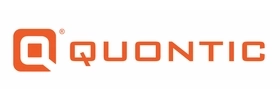
Quontic High Interest Checking
Quontic High Interest Checking
With an APY of 1.10%, the Quontic High Interest Checking account helps you earn extra interest on your money just by making transactions. In order to get the high APY, you’ll need to make at least 10 qualifying transactions on your debit card per statement cycle, and each transaction must be at least $10. However, this likely won’t be a problem if you use Quontic as your main checking account.
In addition to the high APY, a Quontic High Interest Checking account has no monthly fee and no minimum balance requirement to earn cash back. However, you will need at least $100 to open an account. Quontic also offers an unusual feature—Quontic Ring Pay—which allows you to make transactions with a wearable ring rather than needing to carry your debit card with you. You’ll get the pay ring for free upon opening an account.
Pros:
- You can earn up to 1.10% APY, which is high for a checking account.
- There are no monthly fees or minimum balance requirements for cash back.
- Quontic Ring Pay allows you to pay for goods and services without a debit card.
Cons:
- You must meet certain conditions to qualify for the high APY.
- You must make an initial deposit of at least $100 to open an account.
Why we picked it: You can get up to 1.10% APY by making at least 10 transactions of $10 or more per month, which is more than doable for most customers. And then there’s the convenience of the Quontic ring.
RELATED: Best High Yield Checking Accounts
Best for overdraft protection: Ally Bank (Member FDIC) Spending Account
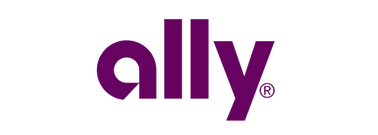
Ally Spending Account
Ally Spending Account
If you accidentally overdraw your checking, Overdraft Transfer Service will automatically transfer the money from your Ally Bank Savings or Money Market Account to cover your negative balance. CoverDraft is a service, not a line of credit or a guarantee. If your purchase isn't covered for any reason (let’s say the transaction exceeds your CoverDraft limit, for example), it will be declined—but we'll never charge you an overdraft fee. CoverDraft will cover up to $100 or ($250 if you have qualifying direct deposits of at least $250 for two months in a row) and then your next deposit will automatically apply to the negative balance.
Two other important benefits: (1) Early direct deposit gives you access to your money up to two business days sooner. To trigger it, twoeligibledirect deposits must be made to your Ally Bank Spending Account within six months. (2) The budget-friendly option to set aside money in specified “spending buckets” (30 is the maximum number) for regular expenses such as gas, groceries, and mortgage payments.
Other pluses: interest on your checking account, and free incoming wires (domestic and international) and official cashiers checks. You also get access to 43,000+ freeAllpoint®ATMs and up to $10 reimbursement for fees charged at other ATMsper statement cycle.
Pros:
- There are two available levels of overdraft protection.
- You can earn up to 0.25% APY on balances over $15,000.
- Ally reimburses up to $10 per statement cycle for out-of-network ATM fees.
Cons:
- Fees apply for expedited delivery, outgoing domestic wires, or account research.
Why we picked it: When you bank with Ally, you don’t need to worry about overdraft fees; Ally will transfer money from a linked account or cover up to $100 itself. That’s a huge relief, especially when income or expenses aren’t always coming at predictable times.
Best for families: Current Spend

Current Spend
Current Spend
When you open a Current Spend account, you’ll have the option to link a teen debt card to your main checking account for no additional charge. This makes it easier to keep the family’s banking under one umbrella while monitoring your teen’s spending (and giving them more financial freedom at the same time.
In addition, you can access more than 40,000 fee-free ATMs though the Allpoint network, and Current Spend doesn’t charge fees for bank transfers or minimum balances. You can also access spending insights through your Current Spend account, which helps you manage your budget and recognize where you can cut back to save money. Finally, with a Current Spend account you have the option to add up to three Savings Pods, which can earn up to 4.00% APY with qualifying direct deposits of $200 or more.
Pros:
- You can link a teen debit card to your main account for free.
- Opting into Savings Pods can earn you up to 4% APY.
- There are no fees for monthly maintenance, bank transfers, or minimum balances.
Cons:
- The Current Spend account does not earn interest unless you set up Savings Pods.
Why we picked it: The Current Spend account is ideal for parents who want to link a card for their teenager to keep track of their spending and encourage responsible financial behavior.
Best for debit card security: Chime Checking Account
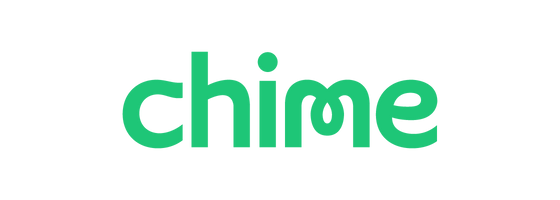
Chime® Banking App
Chime® Banking App
When you open a Chime Checking Account, you can customize your debit card security settings to meet your needs. For example, you can set up daily balance notifications and real-time transaction alerts to keep tabs on your money and identify any unauthorized transactions faster. You can also block transactions immediately from the Chime mobile app if you misplace your card, averting unauthorized usage.
Pros:
- Customizable security settings allow you to set up daily balance updates, get transaction alerts, and block transactions.
- There is no monthly service fee, minimum balance fee, or overdraft fee.
- Chime has a large fee-free ATM network.
Cons:
- Cash depositing is only available at Walgreens locations.
Why we picked it: Online security is more important than ever, and Chime allows you to customize your debit card security settings to feel confident that your money is safe.
Best for zero fees: CIT Bank eChecking
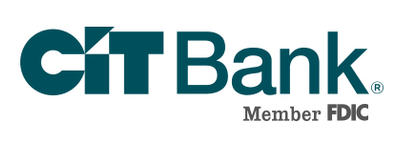
CIT eChecking
CIT eChecking
Although many checking accounts have a $0 monthly maintenance fee, the CIT Bank eChecking account goes a step further. First, CIT Bank does not charge ATM fees and offers up to $30 per month for reimbursements for other banks’ ATM fees. CIT Bank also doesn’t charge fees for overdrawing your account, check mailing, online transfers, or incoming wire transfers. There may be a fee for overnight delivery of a replacement card if yours is lost or stolen or for initiating a wire transaction of less than $25,000, but these fees will likely be rare.
Pros:
- There are no ATM, overdraft, check mailing, online transfer, or incoming wire transfer fees.
- You can receive up to $30 monthly reimbursement for other banks’ ATM fees.
- You can make payments, transfers, and purchases with Zelle, Bill Pay, Samsung Pay, and Apple Pay.
Cons:
- There may be a fee for initiating a wire transaction of less than $25,000.
- There are no paper checks included.
Why we picked it: The CIT Bank eChecking account stands out for not charging fees for maintenance, ATM withdrawals, check mailing, or online transfers. That’s a real bonus.
Best for money management: First Citizens Free Checking

First Citizens Free Checking
First Citizens Free Checking
Disclosure
The Free Checking account from First Citizens comes with access to a program called Manage My Money. Here, you can link any accounts you have with other banks and keep tabs on your overall financial health each month. The program will categorize transactions so you can see where your money is going and identify where you can cut back to save. First Citizens also has a $0 fee for those who enroll in paperless billing within the first 60 days of opening an account and offers overdraft protection for checking customers.
Pros:
- The Manage My Money tool helps you keep track of your overall finances.
- There are no monthly fees if you enroll in paperless billing.
- There are no minimum balance requirements.
Cons:
- You must make an initial deposit of at least $50 to open an account.
Why we picked it: If you want to keep a closer eye on your finances, the Manage My Money tool from First Citizens Bank can help you keep to your budget.
Best for easy cash deposits: Capital One 360 Checking

Capital One 360 Checking Account
Capital One 360 Checking Account
One of the drawbacks of online banking can be the inability to deposit cash at a local brick-and-mortar location. With the Capital One 360 Checking account, you can deposit cash to your account at any CVS location using the on-site ATMs. In 2021 CVS had almost 10,000 locations, so this could be a huge benefit.
Capital One also offers several overdraft protection options, early paycheck access, Zelle transfers, and several physical branches and “cafes,” where you can get a snack and a drink, enjoy free Wi-Fi, and chat with Capital One ambassadors.
Pros:
- You can deposit cash at any CVS location in the U.S.
- Capital One cafes offer snacks, drinks, free Wi-Fi, and assistance from Capital One ambassadors.
- There are several overdraft protection options.
Cons:
- The account’s 0.1% APY is lower than other interest-earning checking accounts.
Why we picked it: Capital One makes depositing cash easy through your local CVS location, and it also offers three overdraft-protection options.
Best for no-frills checking: Citi Basic Banking

Citi Basic Checking
Citi Basic Checking
Sometimes you just want to settle for something simple. When it comes to checking accounts, that’s Citi Basic Banking. This checking account offers unlimited check writing, fee-free ATM withdrawals, and easy money movement—and that’s it.
A Citi Basic Banking account does have a $15 monthly maintenance fee, but it’s waivable as long as you make one direct deposit and one bill payment per month while maintaining a combined balance of at least $1,500 in your checking and other eligible linked accounts (including checking, savings, and money market accounts).
Pros:
- There are several options to waive the monthly maintenance fee.
- There are no overdraft fees or returned item fees.
- Citi waives fees for non-Citi ATMs when certain requirements are met.
Cons:
- There is a $12 monthly maintenance fee.
Why we picked it: Perks are nice, but sometimes you just need a basic checking account, and the Citi Regular Checking account is the best no-frills choice for banking.
Best for checking and savings: PNC Virtual Wallet
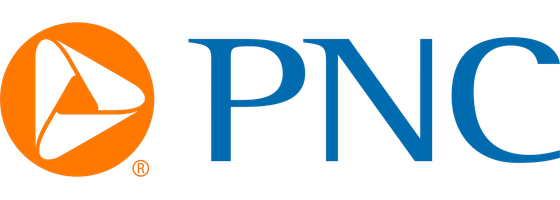
PNC Virtual Wallet
PNC Virtual Wallet
PNC Virtual Wallet is a unique type of checking account that combines checking and savings accounts for easier money ma.nagement. There are three options:
- Virtual Wallet.
- Virtual Wallet with Performance Spend.
- Virtual Wallet with Performance Select.
Each option has a Spend account that acts as the primary checking account, a Reserve account that acts as a secondary checking account, and a Growth account that acts as a long-term savings account. Each option has a monthly maintenance fee, ranging from $7 to $25, though it’s also possible to waive this fee by meeting certain criteria.
One of the most unique features of the PNC Virtual Wallet accounts is something called Low Cash Mode, which has several helpful features:
- $0 insufficient funds fee.
- Maximum one $36 overdraft item fee per day.
- Customized alerts to let you know when your balance is low.
- At least 24 hours Extra Time, when you can add funds to your account to bring your balance to at least $0.
If convenience is a top must-have for your checking account, PNC Virtual Wallet may be your perfect match.
Pros:
- PNC Virtual Wallet combines checking and saving accounts for simpler banking.
- You can earn up to 1.25% APY on a Growth account.
- Low Cash Mode helps protect you from overdraft fees or insufficient funds fees.
- The monthly maintenance fee can be waived in several ways.
Cons:
- There is a $7 to $25 monthly maintenance fee.
- You must have a balance of $100,000 or more to earn the top APY percentage.
Why we picked it: PNC Virtual Wallet is a unique type of account that can help you better manage your finances by combining two checking accounts and one savings account in one.
Best for young adults: BMO Smart Money
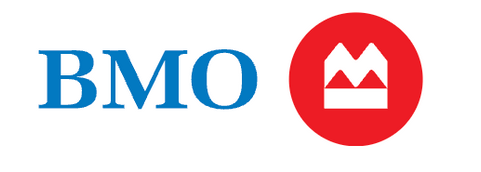
BMO Smart Money
BMO Smart Money
The BMO Smart Money account is a top pick for young adults since the $5 ($0 if you’re under 25) monthly maintenance fee is waived for customers under 25. You can also enjoy unlimited withdrawals from more than 40,000 ATMs nationwide with no transaction fees. There are no overdraft fees, either—an additional bonus for those just starting their careers who may find an unexpected charge on their account before their paycheck clears.
Despite having few fees, the BMO Smart Money account has a couple to note. If you opt for paper statements, there’s a $2 monthly charge (though you can avoid this by receiving e-statements instead). There’s also a $3 charge for check images if you’re signed up for paper statements; that charge is dropped if you receive paperless statements. Finally, a minimum of $25 is needed to open an account.
But when it comes to customer service options, BMO has much to offer. You can get support from a real person through online chat or over the phone, or you can get in-person assistance at a local BMO branch if you have one nearby.
Pros:
- There is no monthly maintenance fee for customers under age 25.
- There are unlimited transactions at over 40,000 ATMs across the U.S.
- There are no overdraft fees.
- You can get personalized support through online chat, by phone, or in person at a BMW branch.
Cons:
- There are additional charges for paper statements and check images.
- There is a minimum of $25 required to open an account.
Our methodology
To determine the best checking accounts, we considered several factors. We compared monthly maintenance fees across a number of highly rated checking accounts, giving preference to those with either a $0 fee or a small but waivable one. We also considered the APY for each checking account we researched, looking for those that could help customers earn more interest on their money. We compared apps, looked for attractive features, and considered special offers for opening an account.
Different types of checking accounts
There are several different types of checking accounts to be aware of while you’re searching for the best one for your needs, including the following:
- Traditional. This type of account offers the basics: check writing, a debit card, and online bill pay.
- Premium. A premium checking account has additional perks over a traditional account, but they usually come at a price.
- High-interest. Traditional checking accounts often have no or a very low APY, but a high-interest account can offer a larger return on the money you keep in your checking account.
- Business. A business may have several different checking accounts to cover payroll, business expenses, and other business-specific situations.
- Check-less. If you don’t need to write paper checks, you may prefer an account that just uses a debit card for transactions.
- Rewards. A rewards checking account can help you earn points that can be redeemed for cash back, account statement credits, and more.
How to pick the best checking account for you
Selecting a checking account can seem overwhelming with so many options from which to choose, and the best checking account for one person likely won’t meet the needs of someone else. The following can help you determine the best checking account for you:
- Do your research. Determine what your biggest needs are and look for accounts that meet those needs. For example, do you want to earn the highest possible APY, or would you prefer a lower APY in exchange for a sign-up bonus or ongoing rewards?
- Consider the cons. In addition to reviewing the pros of each contender, read up on the cons. If an account has a requirement to waive the monthly fee that you can’t meet, it might be best to look elsewhere.
- Understand your preferences. Do you want to do all your banking from a mobile app, or would you like the option to visit a brick-and-mortar location?
- Review the fees. While some checking accounts appear to have none, they may still charge some fees, such as for outgoing wire transfers or ordering checks.
- Understand the welcome offer. If a bank has a welcome offer on its checking account, make sure you read the small print. Is there a minimum deposit amount required to get the maximum welcome offer amount? If so, can you meet that requirement?
Requirements to open a checking account
To open a checking account, you’ll need to bring a government-issued ID, such as a driver’s license, and provide some basic personal information, including your Social Security number or Taxpayer Identification Number (TIN), birthdate, address, and phone number. Many checking accounts require a minimum deposit amount to open them,so make sure you know the specifications and bring cash or a check. If you’re under age 18, you’ll need a co-owner (typically a parent or guardian) to sign the paperwork on your behalf.
Alternatives to checking accounts
There are many options when it comes to checking accounts, but what if you prefer to be “unbanked”? There are several alternative options to consider if you don’t want to manage your money using a checking account.
- Cash. Keeping your money in cash form is convenient and can reduce overspending, but if you lose cash, you can’t get it back. The best checking accounts are insured, which means your money will be safer.
- Prepaid cards. You can get a reloadable prepaid card and pay cash into it regularly rather than using a checking account. Some may offer benefits such as overdraft protection and transaction monitoring.
- Money orders. If you need to make a payment, you can send a money order instead of a check. You’ll just take cash to a place that issues money orders, such as a bank or post office, and exchange it for a money order. However, if that money order is lost, you can’t recoup your lost funds.
- Online payment services. You can use money transfer apps such as PayPal, Venmo, and CashApp to make payments and deposit money instead of using a checking account.
Although there are several alternatives, it’s usually safer and more convenient to keep your money in a checking account, particularly if you use one that has a high APY or offers rewards.
Frequently asked questions (FAQs)
What is the best bank for a checking account?
This depends on what you're seeking. If you want an account with a high APY, Quontic may be the best option. If you want a good rewards program, SoFI could be the way to go.
What is the most frequently charged fee on checking accounts?
That would be the monthly maintenance or service fee. However, many checking accounts today waive the fee if you can meet certain conditions, such as carrying a minimum balance or making a certain number of transactions, and some don’t have the fee at all.
How can I avoid Chase checking account fees?
There are three ways to avoid the monthly fee on a Chase checking account.
- Making electronic deposits of $500 or more from a payroll provider or government benefit provider.
- Maintaining daily balance of $1,500 or more.
- Keeping a combined beginning day balance of $5,000 or more in your checking account and linked qualifying deposits or investments through JPMorgan Chase & Co.
RELATED: Best Online Brokers
How much can I overdraw my checking account?
It will depend on your bank. Many banks have overdraft protection for their checking accounts, but the amount they’ll allow you to overdraw will depend; some may have a $100 cap, while others may go up to $250 or more if you meet certain eligibility requirements.
Which is better: Online checking account or brick-and-mortar?
This depends on what you want. Online checking accounts have many benefits, including high APYs and the ability to bank from anywhere. Still, some customers prefer being able to go to a physical bank location and speak to a representative in person.
What is the difference between a checking account and a savings account?
You use a checking account to manage your everyday finances, such as receiving paychecks, paying bills, and purchasing groceries and gas. You can pay with your debit card or a check, and you can withdraw cash from an ATM.
Savings accounts are designed to help you put money away for a rainy day. They’re limited to six withdrawals per month or statement cycle, and some accrue high interest to allow you to grow your money slowly in a low-risk way.
*APY is subject to change. APY updated as of Mar. 1, 2024.
The information presented here is created independently from the TIME editorial staff. To learn more, see our About page.

